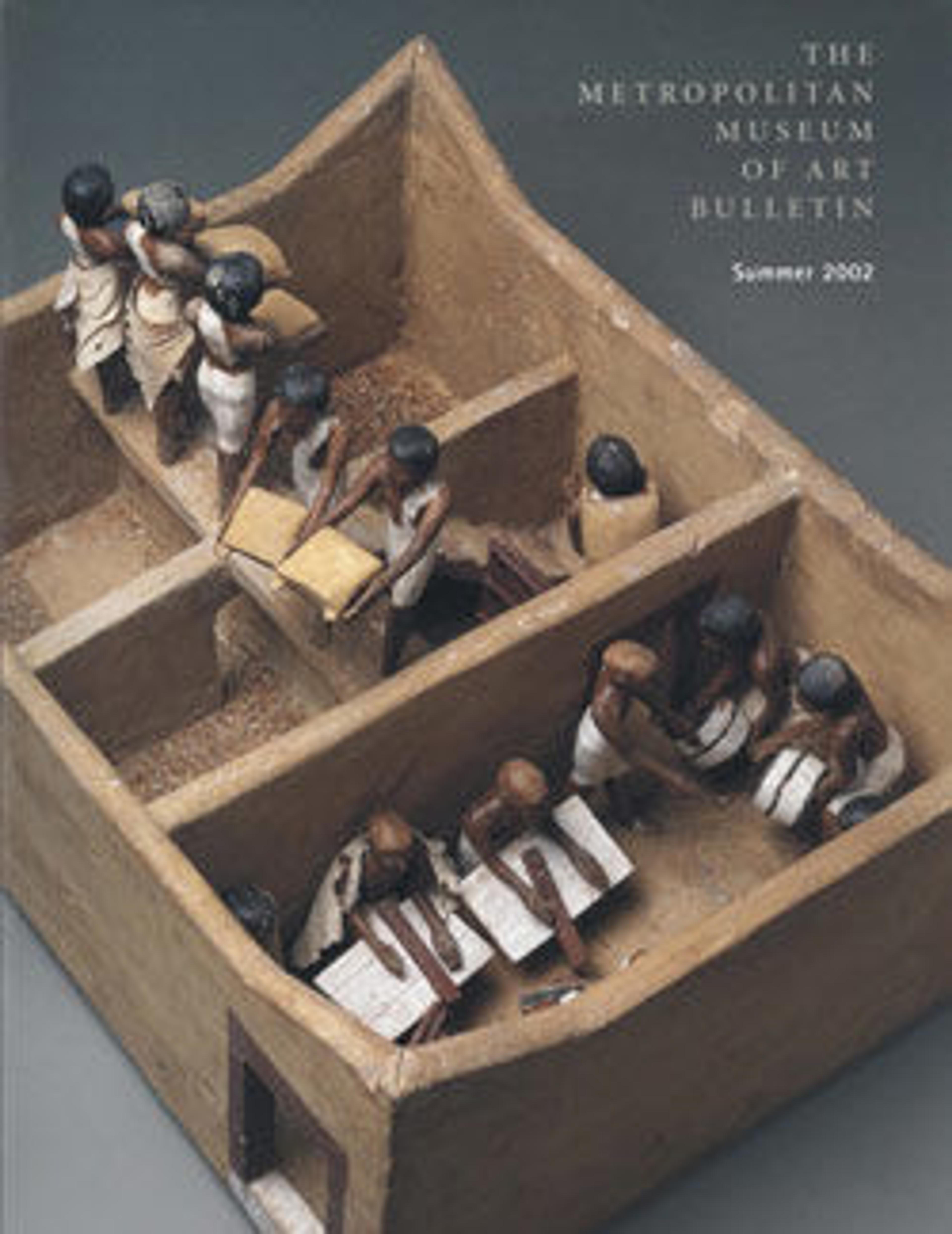Pair of sandals
These sandals were made for a child. They were found in the stone chip debris on the hillside below the tomb chapel of Senenmut (TT 71). The sandals are similar to others in the collection that are fashioned from papyrus, palm leaf, and halfa grass. The finest of these (10.184.1a, b) were found in the Valley of the Kings tomb of Yuya and Tjuyu (KV 46), the grandparents of Tutankhamun.
A pair of child's sandals made of white leather (36.3.235a, b) were found in the same area. There were several burials found beneath the debris on this hillside, but these two pairs of sandals are not clearly connected with any of the burials found on the hillside.
A pair of child's sandals made of white leather (36.3.235a, b) were found in the same area. There were several burials found beneath the debris on this hillside, but these two pairs of sandals are not clearly connected with any of the burials found on the hillside.
Artwork Details
- Title:Pair of sandals
- Period:New Kingdom
- Dynasty:Dynasty 18
- Reign:Joint reign of Hatshepsut and Thutmose III
- Date:ca. 1479–1458 B.C.
- Geography:From Egypt, Upper Egypt, Thebes, Sheikh Abd el-Qurna, below the Tomb of Senenmut (TT 71), radim near the Burial of Amenhotep, MMA excavations, 1935–36
- Medium:Papyrus, palm leaf, halfa grass
- Dimensions:Left : L. 13.5 × W. 6.1 × Th. 0.5 cm (5 5/16 × 2 3/8 × 3/16 in.); Right : L. 12.5 × W. 5.9 × Th. 0.5 cm (4 15/16 × 2 5/16 × 3/16 in.)
- Credit Line:Rogers Fund, 1936
- Object Number:36.3.234a, b
- Curatorial Department: Egyptian Art
More Artwork
Research Resources
The Met provides unparalleled resources for research and welcomes an international community of students and scholars. The Met's Open Access API is where creators and researchers can connect to the The Met collection. Open Access data and public domain images are available for unrestricted commercial and noncommercial use without permission or fee.
To request images under copyright and other restrictions, please use this Image Request form.
Feedback
We continue to research and examine historical and cultural context for objects in The Met collection. If you have comments or questions about this object record, please contact us using the form below. The Museum looks forward to receiving your comments.
